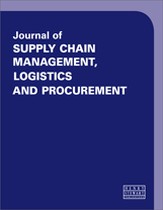Integrating data-driven risk mitigation into supply chain planning and management
Abstract
The supply chain disruptions that occurred during the COVID-19 pandemic, and continue to a lesser degree today, exposed vulnerabilities in many supply chains and increased C-level focus on supply chain resiliency. At the same time, the supply chain risk landscape is becoming more challenging to navigate with more points of vulnerability and an increase in the frequency of disruptive events. The semiconductor shortage that crippled automotive and electronics manufacturers was the most widely publicised example, but across industries material and component shortages, port congestion, severe weather events and other disruptions have taken their toll on business continuity and profitability. Supply chain organisations are taking a multifaceted approach to these challenges, including increasing inventory levels, diversifying supplier networks and re-engineering their supply chains. This paper focuses on using analytics-based risk mitigation tools to support decision making around these strategies and enable a more comprehensive and data-driven approach to supply chain risk. These tools integrate advanced technologies such as predictive analytics, artificial intelligence (AI) and virtualisation to improve risk identification, model complex supply chains during planning and enable proactive management during disruptive events. The paper reviews the current risk landscape, outlines how risk mitigation tools have evolved to meet current needs and the capabilities available in the current generation. It describes how the tools are used in procurement to improve supplier identification and management, in planning to design risk out of the network where possible, and in transportation management to adapt in real time to minimise the impact of disruptive events on delivery and production schedules. Finally, it outlines how these tools work with existing systems and processes to embed an analytics-based approach to risk mitigation into supply chain management.
The full article is available to subscribers to the journal.
Author's Biography
Jason Gillespie is Senior Director, Continuous Improvement and Transportation Innovation at DHL Supply Chain. He directs a team that supports North American customers with supply chain and transportation planning and management solutions that leverage connectivity and data to improve supply chain resiliency, efficiency and predictability. He also plays a global role for the organisation in advancing transportation innovation, standardisation and best practices, including identifying and implementing new technology solutions and innovations. He has extensive experience using supply chain risk mitigation tools to identify and mitigate supply chain risks for leading global manufacturers before and through the COVID-19 pandemic. He has also worked closely with supply chain risk mitigation vendors as they evolved their solutions to better meet the needs of post-pandemic supply chains. A US Army veteran, Jason is a graduate of The Ohio State University with an MBA from Franklin University. He is a member of DHL Supply Chain’s North American Diversity Steering Committee and is active in the company’s efforts to recruit veterans.
Citation
Gillespie, Jason (2023, September 1). Integrating data-driven risk mitigation into supply chain planning and management. In the Journal of Supply Chain Management, Logistics and Procurement, Volume 6, Issue 1. https://doi.org/10.69554/GTMO5049.Publications LLP
